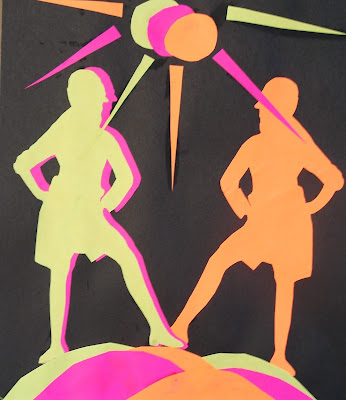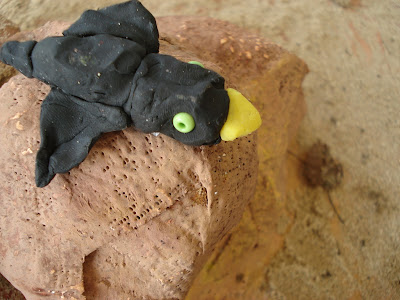 |
| This poster is supposed to represent 'alcoholism'. |
This is a poster project based on the artwork of American Pop Artist Keith Haring. Haring tends to be very popular with Art teachers as his work is very colourful and accessible to students of all abilities.
For this project, Grade 9 students had to think about a social issue they felt was important to them. Then they had to come up with a composition, in the style of Keith Haring, to best illustrate the message behind their chosen issue. Haring's bold lines and active figures work well in a poster format; indeed, his works have been used in many posters and advertising campaigns.
 |
| Image Source |
 |
| Haring's famous trademark 'radiant baby' Image Source |
So I started off by showing a slideshow of Haring's work and having the students describe his style. Then we brainstormed and discussed various social issues that might be appropriate.
Then, for practice, I printed off colouring sheets from his website http://www.haringkids.com/master_act_stories.htm for the students to practice painting on. They used tempera paint which is perfect for this project as it dries nice and flat and opaque
(but you generally need two coats of paint).
After their practice, they figured out their designs in their sketchbooks, then drew them on large heavy white paper and painted them. A bold black outline finishes them off nicely. Popular choices for the posters included environmentalism, bullying, and drug/alcohol abuse. On the back of each poster, students had to write a bit about what their social issue was and why they chose it.
 |
| Practice painting sheets. |
















































